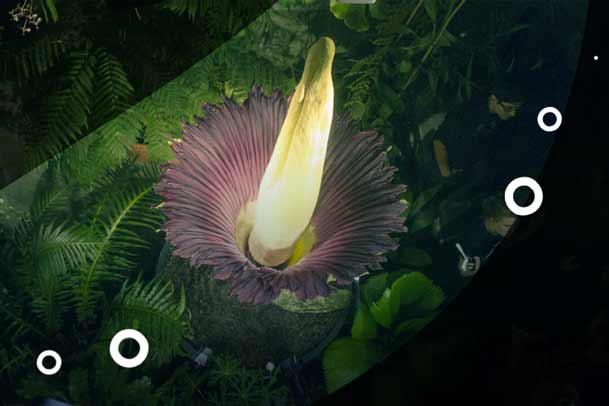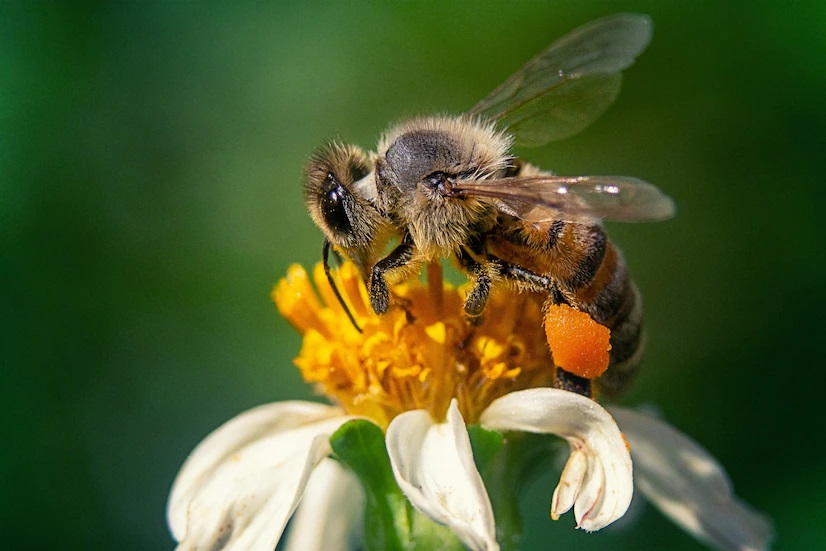After its initial blooming, there can be considerable variation in blooming frequency. Some plants may not bloom again for another 7 to 10 years while others may bloom every two to three years. As the spathe gradually opens, the spadix releases powerful odors to attract pollinators, insects which feed on dead animals or lay their eggs in rotting meat. The potency of the odor gradually increases from late evening until the middle of the night, when carrion beetles and flesh flies are active as pollinators, then tapers off towards morning. Analyses of chemicals released by the spadix show the stench includes dimethyl trisulfide (like limburger cheese), dimethyl disulfide, trimethylamine (rotting fish), isovaleric acid (sweaty socks), benzyl alcohol (sweet floral scent), phenol (like Chloraseptic), and indole (like feces).



